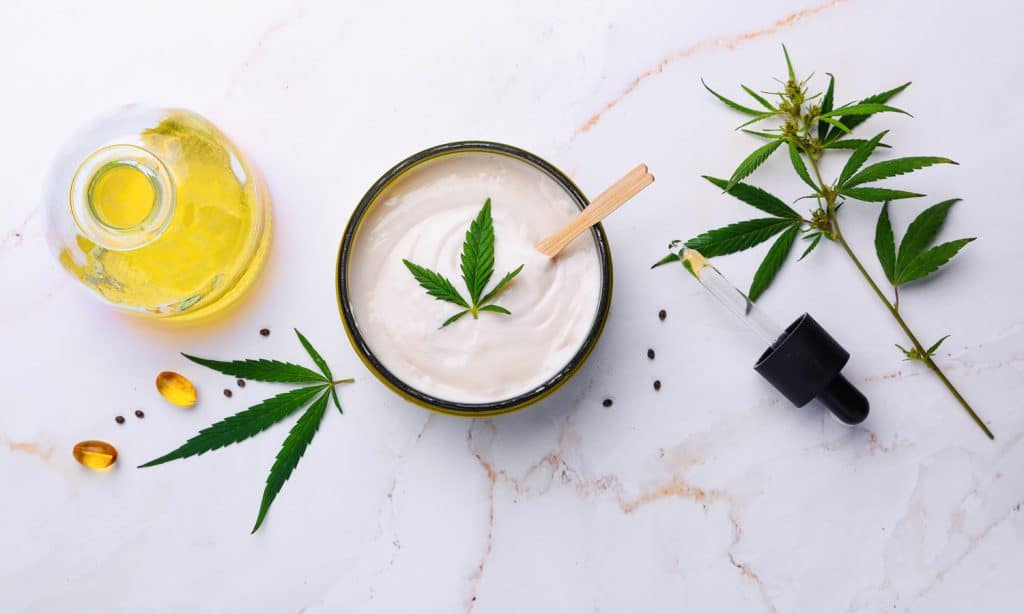Cannabis Topicals 101
It’s no secret that cannabis can be used to alleviate chronic pain. A recent study states that over half of cannabis consumers use marijuana to treat a multitude of pain causing ailments. With more states legalizing cannabis, more people are turning to marijuana to provide an alternative to opiate or nsaid pain medications, and the cannabis industry is happy to deliver! Though cannabis is anti-inflammatory, many would rather forgo these therapeutic benefits due to its psychoactive properties. Thanks to the ever growing cannabis industry, cannabis users can have their cake and eat it too. Topicals are a great way to reap the pain relieving and anti-inflammatory benefits of cannabis without feeling high. They provide localized relief and help with an array of ailments from muscle pain to arthritis and even some skin conditions.
What are cannabis topicals?
Cannabis topicals are cannabinoid infused substances that are applied to the skin to provide relief to a localized area. They are found in a variety of forms: creams, salves, patches, bath soaks, and even face masks. Most topicals don’t enter the bloodstream, so they won’t have any psychoactive effects and can be applied liberally without worrying about getting high. If you’ve been hesitant to give infused salves or lotions a try, go ahead, treat yourself!

How do cannabis topicals work?
The efficacy of topicals has to do with the endocannabinoid system. The human body has CB1 receptors and CB2 receptors. CB1 receptors are located in the brain, nervous system, lungs and liver. The feeling of being high from THC consumption is when THC attaches to the CB1 receptors. CB2 receptors on the other hand are located in the immune and digestive systems. This is where some of the medicinal effects of cannabis come into play. When cannabis attaches to CB2 receptors, it fights against inflammation and helps the body return to homeostasis. This is where we’ve seen its help with muscle spasm, arthritis, crohn’s disease, and many other ailments.
The human body does a great job of keeping outside contaminants from entering the bloodstream. When applied topically, THC does not penetrate the blood vessels and therefore doesn’t attach to the CB1 receptors. This is why topicals don’t typically produce psychoactive effects associated with THC. Infused patches are the exception to this rule, which we will explain in the next section.
What topical should I choose?
The selection of a cannabis topical is dependent on what it is being used for. Though they don’t have psychoactive properties, it’s important to look at how much THC and CBD is packed into your topical. This could save you from spending a fortune at the dispensary. THC and CBD both bind to the same receptors that we already talked about, but they bind to different binding sites on those receptors. This allows them to work synergistically. Since CBD helps fight inflammation, it’s a good idea to have it in any topical. Topicals made from hemp that have no THC are a great option for those who don’t have access to THC infused or those who are treating surface conditions. However, it’s best to find a topical with both THC and CBD for pain management. Using one without the other would be like watching half of a movie. You’ll get some of the good parts, but be missing half of the story. Most topicals will have just CBD, or different ratios of THC and CBD. Topicals with greater CBD to THC ratio are better suited to alleviate pain from muscle soreness associated with exercise or cramps. Topicals with equal parts THC to CBD or a 1:1 ratio will have the greatest therapeutic properties. 1:1 topicals are best for more serious conditions like arthritis, nerve pain, and muscle spasms.
We touched on the fact that THC patches do provide psychoactive properties. Similar to nicotine patches, the THC in patches is able to penetrate the blood vessels and attach to those fun-loving CB1 receptors. This is done with the help of permeation enhancers. As per their name, they facilitate transport of cannabinoids into the bloodstream. While they provide psycho-activity, they are also great options for those looking to ease chronic pain or need a consistent flow of cannabinoids. They come in a variety of cannabinoids such as THC, CBD, CBN, etc.. Patches are applied to a veiny location such as the inner wrist or ankle and left there for a length of time. They will work for the duration of time that they are on the skin which could be anywhere from 30 minutes to 12 hours. For many brands of patches, it is recommended that they be cut into quarters to prevent over-consumption. As the saying goes with cannabis, it’s much easier to add more than to subtract THC that is already in the bloodstream.
Other Things to Consider
It’s important to note that even though topicals aren’t typically associated with “getting high”, everyone’s body chemistry is different. Even though feeling “high” from a topical is highly unlikely, it is still possible. Another thing to consider is that even applied topically, THC is still entering the body and could result in a THC positive drug test.
Each brand of topical will be slightly different in price, potency, and ingredients. Clover operates with the highest quality standards, so any option will be a good one. Your Clovr budtender will be able to help choose the right topical for your specific needs.